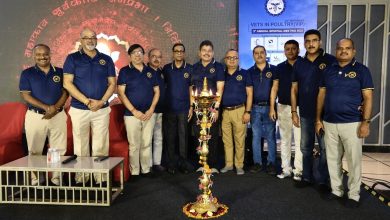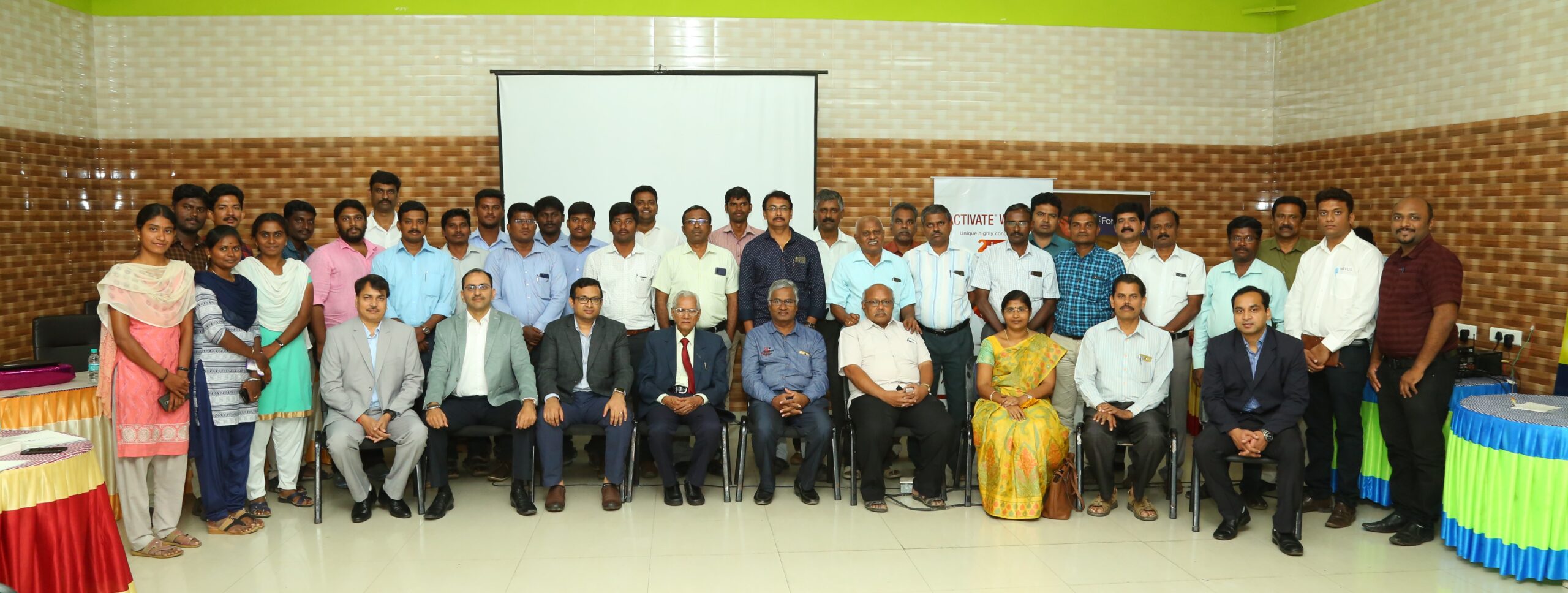Respiratory challenges in poultry during humid conditions-an overview and solution

Dr Raina Raj,
Head of Marketing,
Natural Remedies Pvt. Ltd.
Natural is future 2.0 is a webinar series powered by Natural Remedies Pvt. Ltd., where we invite eminent speakers from across the globe to share their thoughts on the most relevant topics in the animal health industry. In August, we had the privilege of hosting two speakers, Dr. Sudheer B. Rukadikar, veterinary pathologist and poultry health consultant, and Dr. Chandan Chatterjee, Group Product Manager at Natural Remedies Pvt. Ltd. The focus of their discussion was towards understanding and providing practical solutions to the respiratory challenges in poultry, faced during high humidity conditions.

Dr. Rukadikar mentioned that each year, India faces losses of millions of rupees due to poultry sickness caused by viruses, bacteria, and fungi. Microbial illnesses in poultry are a huge concern, despite the widespread use of antibiotics and the best vaccinations available. The large bioburden is one of the explanations. Bioburden is the presence of disease-causing organisms in the shed, which are passed down from one flock to the next.
Dr. Rukadikar brought to notice that there has been growing concern about the presence of residual antibiotics in poultry meat in recent years. This puts pressure on poultry rearing practices to limit antibiotic use in poultry to therapeutic rather than prophylactic or growth-enhancing purposes. Also, the emergence of new multi-drug resistant (MDR) bacteria is a reason why we must use antibiotics at the lowest levels possible.
Clinical symptoms of RDC in chickens are sneezing; open mouth breathing; head shaking; ruffled feathers; gurgling breathing sounds; discharge from nostrils and eyes; eye swelling.
Why is the poultry respiratory system more susceptible to infections as compared to mammals?
While discussing the anatomy and physiology of the chicken respiratory system, Dr. Rukadikar pointed out that, unlike mammals, the chicken respiratory system is not limited to the thorax but extends throughout the body. As a result, maintaining the integrity of the system is crucial. The invasion of the respiratory tract influences the overall performance of the birds. Nostrils, trachea, and bronchi form the upper respiratory tract (URT). The lower respiratory tract is made up of the lungs and air sacs (LRT). The URT also acts as the first line of defense in the body, preventing pathogens from entering. Air sacs are very thin-walled expansions of the bronchi that are only seen in avian species. They are found all over the bird’s body, and they create pneumatic bones when linked to long bones. Any damage or infection to the air sac can cause the bones to get infected. The cleft in the hard palate is another unusual aspect of the bird’s anatomy.
The respiratory system is also a part of the immune system.
Putting the immune system in the spotlight Dr. Rukadikar explained that the avian immune system is comprised of various branches, including gut immunity linked with gut-associated lymphoid tissue (GALT) and respiratory immunity related to bronchial associated lymphoid tissue (BALT). The BALT works by eliminating inhaled particles and keeping the airways clean, preventing or inhibiting the entry of disease-causing pathogens from the air. Several supplements can be used to promote BALT function and immunity by strengthening the respiratory tract’s immunity and defending the body against disease-causing germs.
Challenges in the monsoon season
Birds can withstand relative humidity (RH) levels of 50-70 percent. However, due to increased air humidity during the monsoon season, dampness in the shed is high. Higher humidity always adds pressure to the respiratory system and birds cannot breathe properly.
Ventilation: Poultry houses should be well ventilated. Sufficient aeration is necessary to eliminate dangerous gases such as ammonia, carbon dioxide, and carbon monoxide from the shed. Gases such as ammonia accumulation can lead to damage to the ciliated epithelium in the trachea, which is known as the first line of defense in the respiratory system. When ammonia levels reach 25 ppm, it will lead to ciliostasis, where cilia stop moving, and at levels of 40 ppm, it leads to de-ciliation, which is the loss of cilia. Weakening of the first line of defense will lead to the entry of pathogenic organisms into the LRT, causing serious diseases. Hence, it is important to keep ammonia at the lowest level with proper ventilation. Dr. Rukadikar provided evidence through autopsy images showing disease changes noticed, to emphasize the damage caused.
Filthy litter: About 80 percent of the water consumed by birds is added back to the barn through respiration and excreted as faeces. Due to high humidity, the litter may not dry quickly; care must be taken to remove caked litter.
Vaccination Reactions: Dr. Rukadikar mentioned that vaccinations have, without any doubt, contributed significantly to the health and welfare of birds in poultry farming. But live virus vaccines can sometimes lead to vaccine reactions. Certain vaccine viruses replicate in the intestinal (Newcastle disease (ND), infectious bronchitis (IB), and IBD vaccine viruses) and/or respiratory tract (ND and IB vaccine viruses). But due to replication in the respiratory tract, ND and IB vaccines provoke respiratory distress. In combination, ammonia build-up with poor ventilation in the shed leads to a weakened respiratory immune system. Hence, efforts must be made towards avoiding vaccine reactions too.
Bringing the focus on the current known respiratory diseases in chickens, Dr. Rukadikar listed infectious coryza, infectious laryngotracheitis, IB, ND, avian influenza (AI), and chronic respiratory diseases, which are primarily diseases of the respiratory system. But diseases, such as fowl cholera, aspergillosis, and fowl pox (diphtheritic form), may also affect the respiratory organs.
He then explained the strategy to be followed to overcome respiratory distress.
● Firstly, one must target improving respiratory immunity, aiming at keeping airways patent and reducing stress on the respiratory system.
● Secondly, one should try to increase hemoglobin levels in birds so that oxygen-carrying efficiency is improved.
● During the high-risk period, such as the monsoon season, one should use products that can remove excess mucus in the bronchi such as bronchodilators and expectorants.
General principles to be followed to prevent RDC:
● Cleaning and disinfection of the poultry shed between flocks to reduce bioburden.
● Avoid immunosuppression in birds.
● Continuous disinfection by spraying.
● Keeping the shed aerated, dust-free and the birds stress-free.
● As prevention of RDC, one can use herbal products that act as expectorants and bronchodilators; expand the capacity of the lungs to ease respiratory distress.
Dr. Chandan Chatterjee, group product manager at Natural Remedies Pvt. Ltd., took over the session and talked about a natural way to boost the natural immunity of the respiratory system. He put forth the concept of positively modulating immunity by enhancing immunity and negative modulation by reducing inflammation. .
He introduced the product Respease™ which is an herbal liquid consisting of Glycyrrhizin, Vasicine, Rosmarinic acid, and the essential oil Carvone. Respease™ improves respiratory immunity and boosts oxygenation of the cells through its hematinic activity and respiratory soothing effect.
He showed histopathological slides with evidence of increased BALT area in chicken lungs after supplementation with Respease™. The anti-inflammatory property of Respease™ was tested for its effect on COX2 and PGE2 inhibition. Both COX2 and PGE2 are inflammatory mediators. Respease™ also exhibits properties of a mucolytic, expectorant, bronchodilator, anti-oxidant, and anti-spasmodic. Supplementation with Respease™ in a field trial consisting of 30,000 broiler birds showed improved FCR, increased body weight gain, lower mortality, and improved bird activity as compared to the untreated control group. Respease™ has been extensively assessed and has scientific backing for its ability to improve respiratory immunity and attenuate respiratory distress. The questions addressed during the session are below:
How do we take care of respiratory challenges in layers? Is week-a-month antibiotic therapy sufficient?
Dr. Rukadikar: With the growing concern about the residual antibiotics in chicken meat, it is not advisable to follow the week-a-month schedule of antibiotics for prophylactic purposes. Management tools such as clean environment, stress-free, dust-free, good ventilation, and clean sheds. Also, when going for the live IB and ND vaccines, farmers should supplement the birds with products that minimize stress on the respiratory tract to avoid vaccine reactions.
Any change in the vaccination schedule required to control respiratory infections?
Dr. Rukadikar: There is documentation that administering a live LaSota vaccine in the presence of avian influenza (AI) can lead to respiratory reactions. Hence, it is better to go for clone vaccines which do not show vaccine reactions.
Can Respease™ be used in treatment also?
Dr. Chandan: Respease™ has been designed to be used for prophylactic purposes, but it can also be used for treatment purposes.
What kind of management improvisations helps in reducing respiratory challenges in humid conditions?
Dr. Rukadikar: Avoid overcrowding.
If humidity is high and no natural air movement is present in the shed, then fix high-speed fans to help air circulation.
Does Respease™ react with any other medicine or supplements when added to water?
Dr. Chandan: Respease™ is a very inert herbal product and it is a natural product. Hence, it doesn’t react with other medicines or supplements. It is very safe to add to water.
Even though a bird’s respiratory system is advanced in comparison to that of humans and very effective, it is more prone to respiratory infection. Why?
Dr. Rukadikar: The avian respiratory system is advanced, but also delicate. The bird’s respiratory system is not restricted to one part of the body. It is spread throughout the body and any minor insult to any part of the system will spread all over.
CRD is a common problem in the field. How can we manage the situation?
Dr. Rukadikar: a. CRD is vertically transmitted from parents to offspring, hence purchasing the chicks from a known vendor where the parents are not infected.
b. Preventive Treatment: Tylosin and Tilmicosin can be used according to the prescribed dosage.
c. If there is a doubt about mycoplasma infection, then the flock must be vaccinated for IB and ND at a young age. In spray vaccination, the size of the vaccine must be very critically managed.
What is the main point of cleaning with disinfection to protect against respiratory problems?
Dr. Rukadikar: Cleaning must be done well before introducing a new flock. This is not just for the prevention of respiratory diseases, but also for other diseases. Cleaning should be done well with no residues of organic matter. This should reduce the bioburden to a great extent. And disinfection with the recommended concentration has a good effect.



